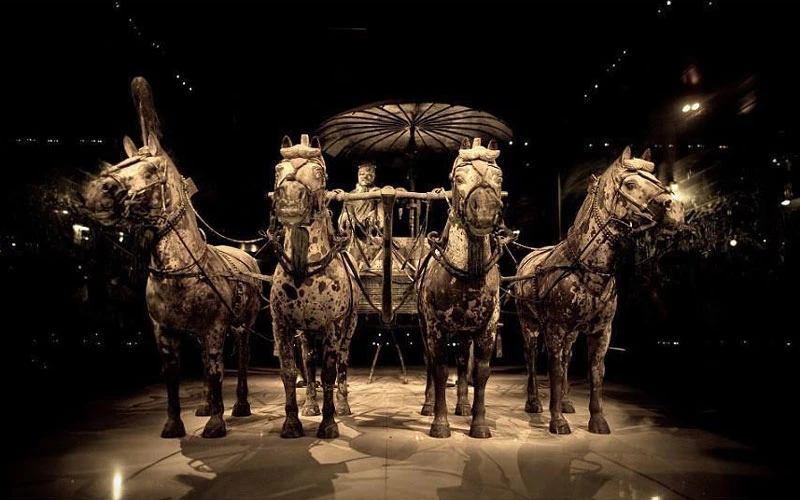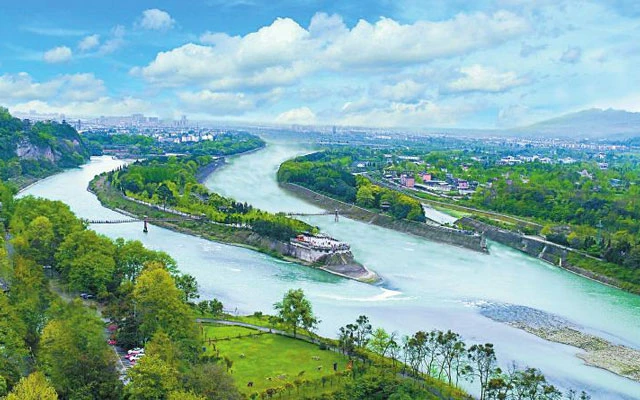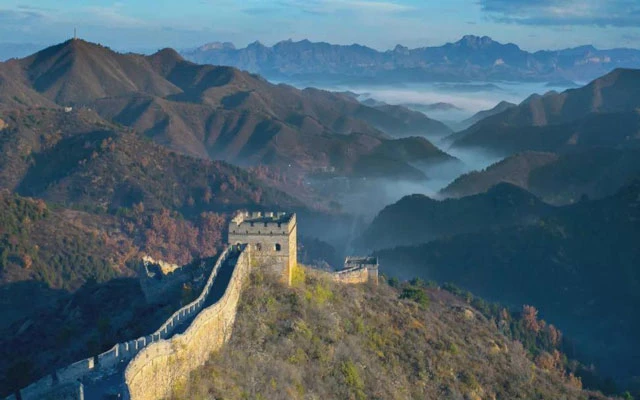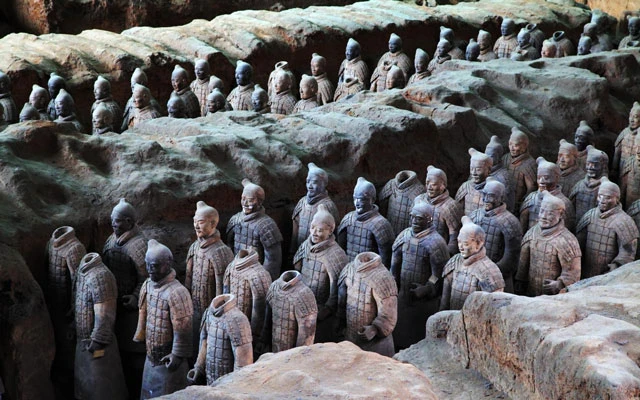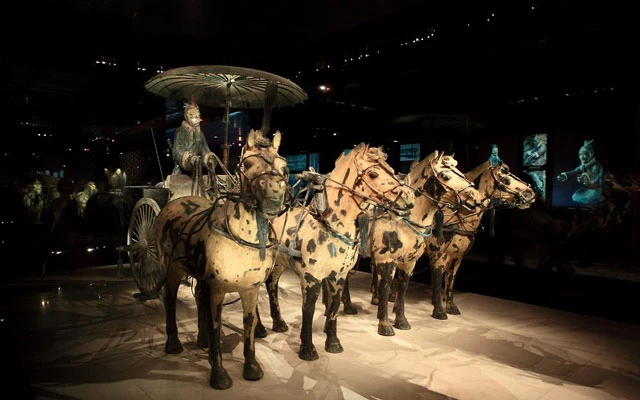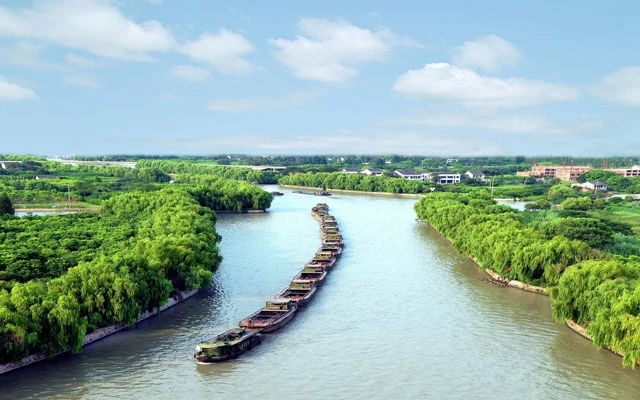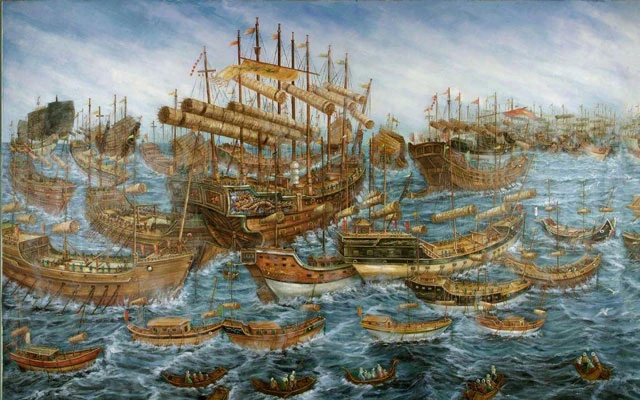Ancient China was one of the largest and most influential empires in Asia, with more than 5000 years of existence, the Chinese built monumental dams and walls that still remain today. With the unparalleled creativity and ambition of their rulers, they managed through great battles to unify China into a powerful empire, even stronger than the great empires of ancient Europe. Let's learn about Chinese civilization development together.
Before becoming a great empire, China was submerged in chaos and cruelty of war, made up of several states that fought for total control of the territory. This period would be known by historians as "The Warring States". But it was not until the third century B.C. that a state known as the Qin managed to impose themselves on the other kingdoms by means of their ingenuity and military strength, thus unifying a vast region of China and giving birth to one of the largest empires in history that still survives today.
The Qin were strong because of their geographical position, which gave them access to the main navigable rivers of China and because of their rich fertile lands for agriculture, gave them an advantage over their adversaries at the time of combat since they could move at great speed along the navigable routes and could supply food to their army. These geographical advantages and the discovery of materials such as iron allowed them to base their military tactics that focused on attacks with soldiers on horseback, to attacks of great magnitude by means of infantry, these soldiers on foot with swords, spears, and armor made with the manipulation of metals, managed to win the decisive battles against the states of Han, Zhao, Yan, Wei, Chu, and Qi.
In conquering a vast region, the Qin faced a problem, which consisted in the lack of food supply and access roads for the conquered states. This responsibility would be taken by a Qin army officer named Li Bing, because of his knowledge in hydraulic engineering, he built with thousands of Chinese workers a masterpiece of engineering. His plan was to create a series of dams and a channel of colossal magnitude, which crossed the Chian mountain by digging with little technological tools such as hammers and chisels to control and change the course of the Min river in order to achieve a new waterway and have enough water to allow agriculture to the new territories.
In 247 B.C. Ying Zheng, born in Handan, capital of the enemy state of Zhao, came to power. Son of Zichu, who was a prince of the royal house of Qin and was a hostage of the state of Zhao and then released by a deal between the state of Zhao and the state of Qin. Ying Zheng took the power of the Qin state at the age of 13 with his mother as queen dowager who was in control until her son came of age. At the age of 22, Zheng took full power as the emperor of the Qin people, this aroused envy in the people around him which led to plotting his assassination. Among the people who planned his death was his mother who already had two children with a wealthy man of the region.
The emperor upon discovering the plan that would lead to his death, ordered his mother banished from the kingdom, a sentence that would not be the same for his half-brothers and their father as they were executed. With the throne free of any threat, Ying Zheng ordered his army to finish conquering the missing states to unify all of China, in this journey, would find a kingdom that would fiercely oppose not to be conquered. The state of Chu was a great obstacle for Emperor Zheng.
In 238 B.C. the Qin launched a frontal attack to subdue and annex the Chu, fifteen years it would take the Qin State to defeat the Chu in violent battles where thousands of soldiers died on both sides. Yin Zheng after the victory over the Chu state named himself the first emperor of China, known as Shi Huangdi. Upon completing his goal of unifying all of China, he decided to build what would be one of the most ambitious projects of his reign.
Chinese Wall
Many states in northern China had built walls to protect themselves from the battles that were fought for total control of the territory. Yin Zheng was aware of these constructions and ordered his engineers to unite all of them to create a single wall "the great wall of China" to protect his new empire from any invader.
This wall, with a length of 9,000 km and antiquity of more than 2,000 years, is one of the wonders of the modern world. It was not originally the wall that is known today, it was more of a simple wall of compact earth bricks and adobe. It presented a huge construction challenge for the time because it had to go from the eastern sea to the Gobi desert, in order to keep the Mongols out of China and its people inside this fortification.
For the creation of this megaproject, the people of China had to pay a high cost of living, having to workmen, women, and children with their hands without being able to refuse to do so, because they would be condemned to death. In addition to illness and injury, they had to suffer intense workdays with very little food. This construction inspired many mothers to write poems that would be known years later; where they would describe what they lived there when their children had to go to work since it could be the last time they would see them.
The first Chinese wall was built with an innovative technique for that time; it consisted of creating a wooden frame that would be filled with earth and flattened until it was compacted, when the wooden frame was removed, a solid block of the earth would remain with enough strength to stop an invasion.
In 210 B.C. the wall had extended more than 5000 km leaving an important mark in the Chinese territory, these advances did not cause pride in the people considering that this construction was not worth the price they had to pay for creating it. Filled with rage for the inhuman sacrifice that the Chinese people had to suffer, a plan to assassinate the emperor was initiated, resulting in three failed assassination attempts.
Shi Huangdi, decided to vent all his anger against China, burning all the documents that recorded the cruelty he unleashed on his people; and punished all the people who spoke ill of his reign by forcing them to hard labor or the death penalty. These events led the emperor to suffer from paranoid conspiracies to overthrow him from the throne, which would lead him to banish his own son and to summon again all his people for the construction of one of the most impressive and mysterious structures of today.
Terracotta Soldiers
He gathered more than 700,000 men near the capital of China to build his tomb, which he designed at the age of 13. His death occurred mysteriously while he was on a journey through eastern China; in search of the legendary islands of the immortals and the secret of eternal life. Molded-in terracotta thousands of Chinese soldiers in battle formation, guard the entrance of the tomb of the first Chinese emperor; these statues with great detail in his face and armor measure about 1.72 cm to 2.30 cm; and were designed to look like a real army to show the power and greatness of their emperor.
The Terracotta soldiers were a part of the imposing construction that Shi Huangdi designed; these would guard the greatest treasure that would be his mausoleum, with a height of 120 meters; according to historical writings, there is the bronze tomb of the first emperor dressed in a golden armor; floating in rivers of mercury with a miniature representation of his entire kingdom.
The entrance and excavation of the tomb have not been allowed yet; since China has decided to wait until they develop the technology to preserve what is still kept there; although scientific tests have shown that there is a large chamber; and the mercury indexes are higher than normal, would be the only evidence that ratify the writings that describe the imposing tomb.
After the death of Shi Huangdi, China began a civil war for the total control of the empire; but it was in the year 260 B.C. that a new ruler came to power; he would be known as Liu Bang, an emperor with great political skills, who knew how to calm and win over the people who were in the chaos of war.
The new emperor took four years to consolidate his government that would be known as the Han dynasty; this emperor brought the peace that his people longed for until the time of his death in 195 BC. The Han dynasty lasted 4 centuries; it sought to fortify the great wall of China with garrisons and expanded the wall much more than the first emperor had done. During this reign, the population of China increased to 50 million and their empire extended south into what is now known as Vietnam and west into Afghanistan.
In 184 B.C. a peasant revolution would put an end to the Han dynasty and China would once again be plunged into the chaos of war; wars that would last three centuries until the Sui dynasty established order and unified China once again.
The Grand Canal
With the leadership of Yang Di, who, unlike his predecessors, focused on fortifying the interior of his kingdom by taking advantage of waterways such as the Yangtze River, with a length of 6,300 km and the Yellow River, with a length of 5,464 km; these two large bodies of water would lead Yang Di to create a canal to link these water sources, in order to link his entire kingdom and increase trade between his regions.
For this ambitious project, Yang Di took his people to precarious working conditions, where thousands of people lost their lives due to fatigue and hunger. This construction would last 6 years. Upon completion of the great canal, the cities around the new waterway would become the main sources of trade in silk and high-quality merchandise.
This important river construction boosted the art, poetry, and landscape painting of the region in China. Emperor Yang Di decided to tour its monumental construction by boat in order to observe the efficiency of his project up close. With an enormous amount of ostentatious and beautiful boats he decided to travel the entire canal, during the crossing; groups of villagers gathered to watch the king pass by; observing the luxury and the waste of food by their emperor when he threw the leftover food from his banquets into the river.
The emperor of China once again underestimated the power of his people; and the people, filled with anger at the contempt of their ruler, decided to destroy his regime. China is again in a civil war that would reach the palace gates; this caused the emperor Yang Di to be assassinated by his generals in the year 618 A.D. thus ending the Sui dynasty. After this event, China would be ruled by the Mongols known as Yuan, who held power for a century, until the Ming Dynasty recovered the territory, returning it to its rightful owners, the Chinese people.
Ming Treasure Voyages
One of the important people during the rule of the Ming dynasty was the naval admiral Zheng He; given as a gift to the emperor's son in his infancy. Admiral Zheng together with the emperor of the Ming dynasty, decided to create the largest naval fleet in the history of mankind; with a total of 300 ships ready for battle with thousands of sailors ready to explore the seas of Asia.
This naval exploration, which began in 1405, managed to reach the coasts of Africa, generating trade treaties and demonstrating the riches and military might of their empire. The last voyage made by the admiral Zheng He would be to India, where he would die in strange circumstances; after his death a new emperor was already in power in China who ordered the immediate return of the entire fleet, to later dismantle and destroy it, this being the end of the exploration of China.
In the year 1449 the enemy of China, the Mongol forces, decided to make a decisive attack that led the Ming dynasty to restructure the Chinese wall, turning it into the colossal structure that is known today, fortifying it with bricks, stone, and cannons to defend against the Mongol attacks.
By the year 1600, a tribe known as the Manchu gathered forces to attack the Ming Dynasty, which was weakened by social conflicts. By the year 1644, the Manchu forces took the capital of China, Beijing, completely ending the Ming dynasty, one of the most important in the history of China.
It took the Chinese people more than 250 years to expel the invaders, and when they succeeded, a new society was born, communist China; being one of the oldest societies in the history of mankind with an enormous cultural wealth that still lasts.
